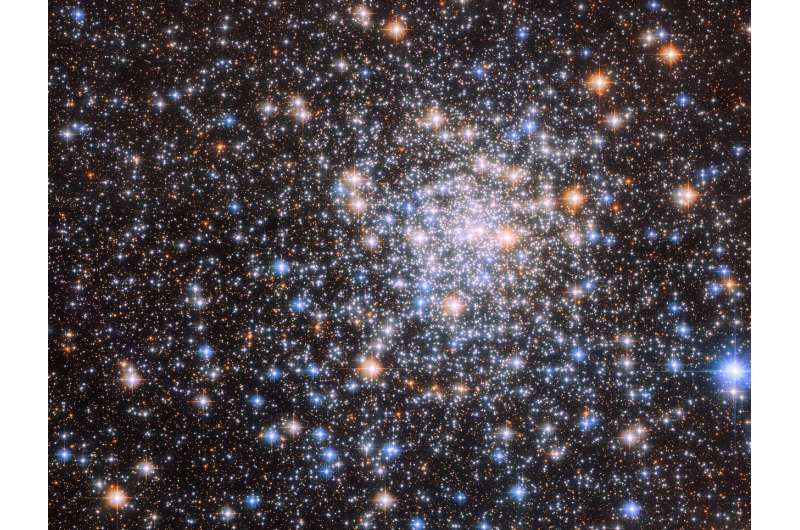
Credit: NASA
The teeming stars of the globular cluster NGC 6544 glisten in this image from the NASA/ESA Hubble Space Telescope. This cluster of tightly bound stars lies more than 8,000 light-years away from Earth and is, like all globular clusters, a densely populated region of tens of thousands of stars.
This image of NGC 6544 combines data from two of Hubble’s instruments, the Advanced Camera for Surveys and Wide Field Camera 3, as well as two separate astronomical observations. The first observation was designed to find a visible counterpart to the radio pulsar discovered in NGC 6544. A pulsar is the rapidly spinning remnant of a dead star, emitting twin beams of electromagnetic radiation like a vast astronomical lighthouse. This pulsar rotates particularly quickly, and astronomers turned to Hubble to help determine how this object evolved in NGC 6544.
The second observation which contributed data to this image was also designed to find the visible counterparts of objects detected at other electromagnetic wavelengths. Instead of matching up sources to a pulsar, however, astronomers used Hubble to search for the counterparts of faint X-ray sources. Their observations could help explain how clusters like NGC 6544 change over time.
Citation:
Hubble glimpses globular cluster NGC 6544 (2023, June 23)
retrieved 25 June 2023
from https://phys.org/news/2023-06-hubble-glimpses-globular-cluster-ngc.html
This document is subject to copyright. Apart from any fair dealing for the purpose of private study or research, no
part may be reproduced without the written permission. The content is provided for information purposes only.
>>> Read full article>>>
Copyright for syndicated content belongs to the linked Source : Phys.org – https://phys.org/news/2023-06-hubble-glimpses-globular-cluster-ngc.html














![[News] Japan Develops 10nm Nanoimprint Technology, with Potential to Tackle EUV Bottleneck – TrendForce](https://earth-news.info/wp-content/uploads/2025/12/329851-news-japan-develops-10nm-nanoimprint-technology-with-potential-to-tackle-euv-bottleneck-trendforce-360x180.jpg)
















